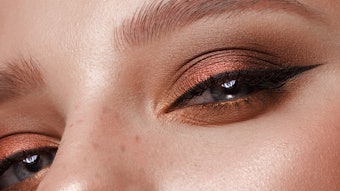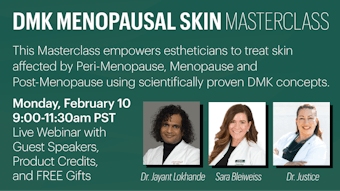
As summer draws to a close, clients may begin to notice some of the unpleasant effects sun exposure can have on the skin: Namely, hyperpigmentation and wrinkles. So what can medical spas do to reverse sun damage?
While some damage is irreversible, there is a multitude of treatments on the market, according to Cindy Yoon Soo Bae, M.D., dermatologist with the Laser & Skin Surgery Center of New York.
Of course, treatment depends on patient symptomology. Common signs of sun damage include wrinkles, enlarged pores, red or brown spots, and textural changes, such as roughness or dryness, sagging, actinic keratosis and skin cancers.
Topical Treatment Options
“Antioxidants can help neutralize free radicals that cause DNA damage to prevent further damage and can also help with the texture and pigment of the skin,” Bae explained. “Retinoids can help with collagen production and pigmentation in the skin. Various acids are available that can help exfoliate the top layer of the skin for a smoother texture and can also help with pigment.”
“While it may appear that they’ve come out of nowhere, [hyperpigmentation is] actually cumulative UV damage coming to the surface.” —Leigh-Ann Dolan, lead esthetician at 3000BC Spa
Bae noted that over-the-counter topical formulations do treat sun damage to a certain degree, but for some clients, prescription topical formulations, such as hydraquinone, 5-fluorouracil, imiquimod and ingenol mebutate, can be more efficacious.
Additionally, mild chemical peels can help exfoliate the top layer of skin, which can improve the look of brown discoloration, roughness and texture. Deeper chemical peels can also help with the texture of the skin as well as pigment and brown spots.
“I have clients come into my treatment room all the time and say, ‘These brown spots popped up overnight! I wear SPF every single day!’ While it may appear that they’ve come out of nowhere, it’s actually cumulative UV damage coming to the surface,” said Leigh-Ann Dolan, lead esthetician at 3000BC Spa in Philadelphia. “Most Americans acquire 23% of their sun damage by age 18 and around 10% more every decade after that.”
Lasers and Light Devices
Non-ablative lasers, such as PicoSure, are ideal to specifically target brown spots, red spots, wrinkles, enlarged pores and textural problems. Ablative lasers are more aggressive and require some downtime, but provide a more dramatic improvement in one treatment.
Alternatively, photodynamic therapy can improve pre-cancers as well as the texture of the skin, according to Bae.
“My favorite way to quickly and effectively treat sun damage is IPL,” said Dolan. “At 3000BC, we use the Syneron Candela elos Plus, which has the added benefit of radio frequency. RF has a warming effect on the skin and creates a path for the IPL to travel, allowing it to get further into the skin and treat deeper pigment problems.”
Ideal Patients
Tailored treatments combined with effective home-care products can help reverse many signs of sun damage. Patients should be educated about their treatment options, including expected downtime or activity limitations after procedures.
“Anyone with signs of sun damage should seek the consultation of a board-certified dermatologist to discuss their concerns and review their dermatologist’s findings on exam to create a treatment plan,” said Bae. “So many therapeutic options exist—anyone with sun damage is a candidate for treatment.”










